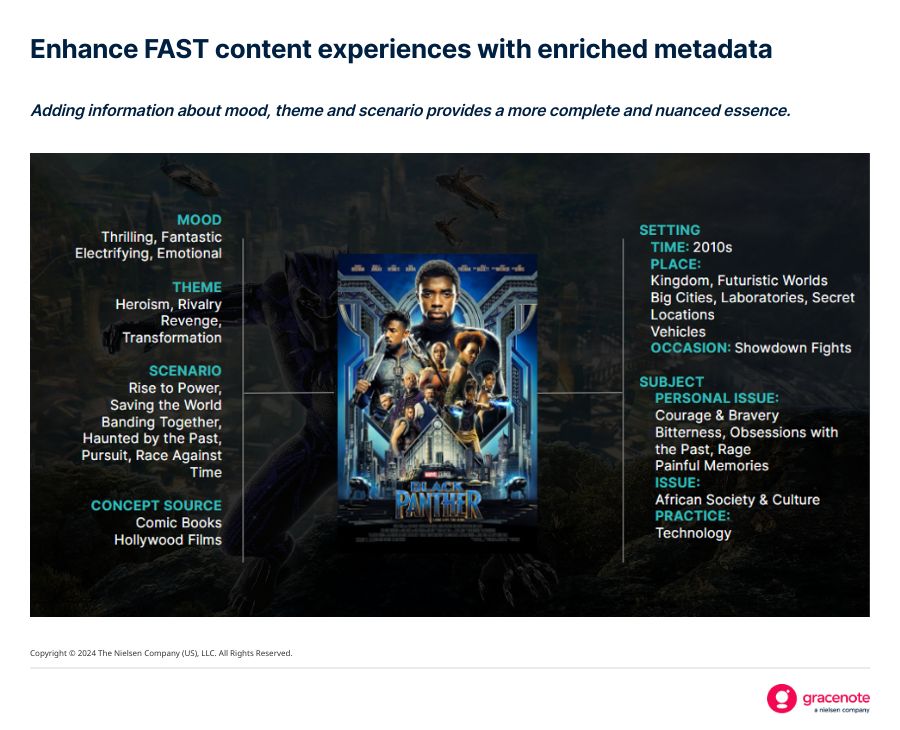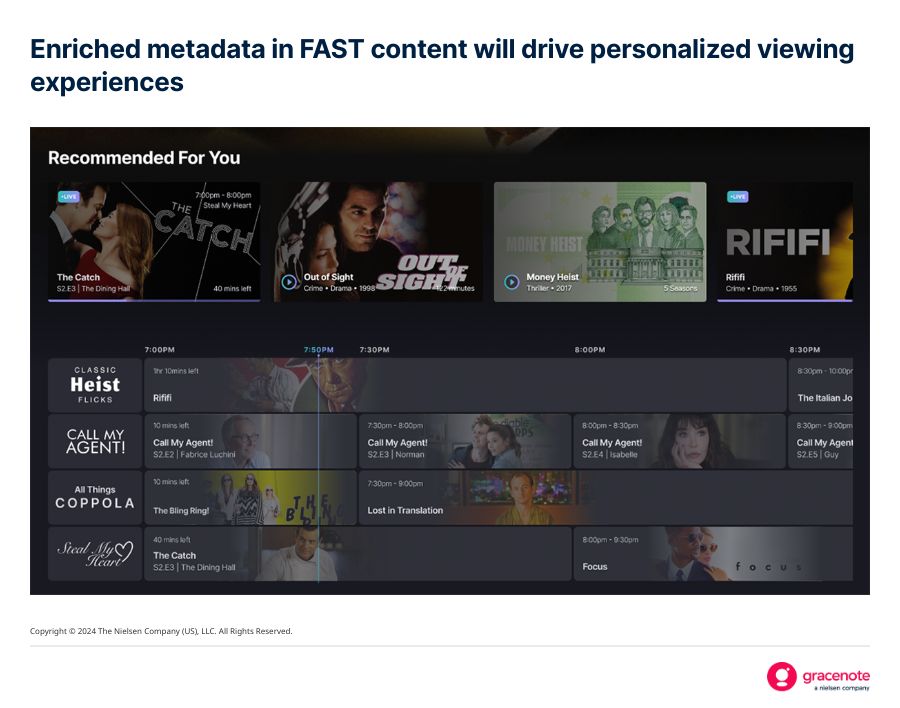In less than 20 years, streaming video has both transformed the TV landscape and created somewhat of a mirror image of what TV looked like before streaming arrived.
Not only has advertising started to flourish as a means of monetization across platforms and services, live, scheduled programming continues to gain traction as content creators, media companies and device manufacturers roll out new free ad-supported television (FAST) channels to a growing number of platforms.
Yet as quickly as some creators may develop and launch a new FAST channel, ideally with a strategic distribution plan, ensuring a channel’s long-term viability is anything but guaranteed.
For starters, the FAST landscape has become incredibly crowded over the last year. Given the rapidly evolving FAST landscape, industry size estimations are varied. According to Gracenote Video Data, there are more than 1,900 individual FAST channels for audiences to choose from, with more than 1,300 in the U.S. alone. For context, there were just 1,000 in the U.S. mid-way through 2023.
That’s 30% growth in eight months. And what’s more, individual FAST platforms, such as Pluto TV, Amazon’s Freevee and Tubi, typically have hundreds of channels within them, providing ample choice within individual electronic program guides.
The three independently reported FAST services in Nielsen’s the Gauge have a combined total of more than 800 live TV channels.
Industry congestion notwithstanding, viewer engagement and advertising dollars are increasingly focused on over-the-top1 content that audiences access via their connected TVs (CTV2). In third-quarter 2023, for example, audiences spent just under two hours per day with CTV content3, representing more than 40% of their total time with TV (4:34 per day).
Time with FAST programming is also growing: Pluto TV, Tubi and the Roku Channel accounted for 3.7% of total TV use4 in February 2024. With viewership rising, advertising is following suit. Digital TV Research Ltd., for example, forecasts that global FAST revenue will hit $17 billion in 2029, up from $8 billion in 2023.
Not everyone will benefit from the upswing. More channels does not equate to more viewership. It simply disperses viewership. This is true across the streaming industry, and audiences are overwhelmed. A January Motley Fool survey, for example, found that 62% of audiences say there are too many streaming options, with 39% reporting pulling back on the services they subscribe to on a year-over-year basis.
70% of streaming consumers are familiar with FAST services and have watched FAST content in the past three months.
FAST services stand to benefit from subscription overload, as a 2023 Deloitte survey found that 19% of consumers have switched from a paid subscription to a FAST service. Additionally, Nielsen’s latest streaming consumer survey found that 70% of respondents said they are familiar with FAST content in the past three months. Access to new content is a primary driver, with 63% saying they have access to traditional VOD services but are interested in exploring new content on FAST platforms.
Yet with the industry intently focused on content monetization, creators, publishers and broadcasters entering the FAST industry need to do more than simply make their programming available to viewers.
The best way to engage and maintain audiences is by offering them something they’re actually looking for. But content isn’t born with an innate ability to deliver itself to audiences. That’s where metadata comes in. But like content, metadata is not homogenous. This is especially the case in FAST services, where individual channels come from an array of distributors.
But when content includes a Gracenote ID, it’s automatically linked to an array of standardized entertainment assets that are critical in fulfilling audience search and discovery journeys. Linked information includes:
- Description
- Genre
- Cast
- Imagery
- Program availability
Still in its early days, the FAST ecosystem is playing catch up with respect to metadata. A recent analysis, for example, found that 31% of the FAST programming submitted to Gracenote did not include any genre information. This, in and of itself, will limit monetization opportunities, as brands and agencies are unlikely to advertise against content without knowing the program genre.
But having the basics is just the beginning. Succeeding in the future will require data enrichment strategies that build on the basics of imagery and descriptions by providing a more complete picture of your content. Additions like mood, theme, scenario and setting provide a new layer of information that can elevate the appeal of programming among audiences looking for something to watch.

Additionally, enriched metadata can help ensure that content stands out as next-generation FAST experiences arrive, including enhanced search and discovery algorithms for recommendation engines—which are now table stakes in traditional VOD environments.

The importance of normalized and comprehensive metadata can’t be over-emphasized. Disney’s recent metadata overhaul to bring Hulu content into the Disney+ app, highlights the immense differences that individual apps and platforms have with respect to content and metadata.
While this exercise took place in the VOD space, it speaks to the myriad approaches to metadata across the streaming landscape and the associated distribution challenges this causes. Having the right metadata partner, however, ensures that content quickly plugs into any platform and offers the richest audience experience possible—including those that have yet to materialize in the FAST ecosystem.
For additional insight into the needs of FAST content heading into the future, download our FAST toolkit.
Sources
- Over-the-top (OTT) refers to streaming video content that audiences access through an internet connection.
- CTV refers to any television that is connected to the internet. The most common use case is to stream video content.
- Nielsen National TV Panel.
- Nielsen’s The Gauge, February 2024.
*This article originally appeared on www.nielsen.com.
SVOD catalogs are big business, but they’re vastly underutilized
Recent TV viewership trends suggest that many SVOD services might not be getting their money’s worth from the majority of the content they distribute.
What’s new in SVOD? Most of its content
Despite the wealth of variety available on streaming services, the overwhelming majority of programming is very new.
2024 State of Play
This report highlights SVOD content trends, distribution strategies and can be used to develop personalized content journeys.